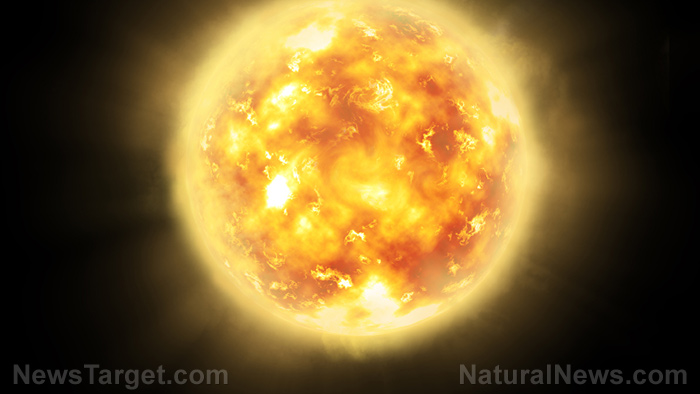
Advertisement
Global warming alarmists can take a chill pill. A ground-breaking study by Californian scientists predicted that the radiation from the Sun will taper off during the middle of the 21st century, allowing Earth a chance to cool off, reported a Science Daily article.
This reduction in solar radiation is part of an irregular but recurring natural event called a grand minimum. Scientists believe it is triggered by changes in the Sun’s magnetic field. During a grand minimum, the Sun’s magnetism drops by a significant margin. Sunspots (a product of intense magnetic activity) will form less often and the levels of ultraviolet radiation sent Earth’s way also goes down.
Experts based this prognosis on geological and historical data. They believe the “Maunder Minimum” was responsible for a famous cold period in Europe during the middle of the 17th century. During that time, the weather got so cold that the Thames River froze on a regular basis. So did large parts of the Baltic Sea, allowing a Swedish army to invade Denmark by marching across sea ice. (Related: NOAA caught AGAIN altering temperature data to exaggerate “global warming” hoax.)
Sun-like stars also undergo grand minimums
This led a University of California San Diego (UCSD) research team to investigate the potential dimness of the Sun during the next grand minimum.
The study is titled “Ultraviolet Flux Decrease Under a Grand Minimum from IUE Short-wavelength Observation of Solar Analogs.” Sponsored by the state of California, the findings were published in the science journal Astrophysical Journal Letters.

“Now we have a benchmark from which we can perform better climate model simulations,” said study author Dan Lubin, a research physicist at the Scripps Institution of Oceanography of the UCSD. “We can therefore have a better idea of how changes in solar UV radiation affect climate change.”
The Sun is known to undergo an 11-year cycle when its UV radiation output rises and drops based on sunspot activity. If it takes place during a grand minimum, the UCSD team believe UV radiation will drop by an additional seven percent.
In order to estimate the intensity of a grand minimum, Lubin’s research team pored through two decades of data gathered by the International Ultraviolet Explorer satellite mission. They correlated radiation from Sun-like stars and pinpointed the stars that were undergoing those events.
After analyzing the sunspot patterns of these stars, the UCSD research team compared them with the sunspot patterns of the Sun during recent solar cycles. The similarities led them to predict a high chance of a grand minimum event taking place in the near future.
Time to cool down
According to the study, a reduction in the amount of UV energy emitted by the Sun will trigger a series of climate shift events on Earth. The ozone layer in the stratosphere will get thinner, which will affect the way temperature is distributed in that layer of the atmosphere.
This in turn affects the lower atmospheric layers, leading to changes in wind and weather patterns. The end result is that the planet will get cooler overall.
The cooling effect is not uniform. The aforementioned Maunder Minimum of the 17th-18th century saw warmer temperatures in Alaska and southern Greenland.
Other researchers turned to computer modeling for an estimate of how this event could affect the current global climate. One such study based its estimate on a 0.25 percent reduction of solar irradiance over a 50-year period starting in 2020. According to that computer model, the surface air temperature cooled by up to several tenths of a degree Celsius from 2020 to 2070.
Want to find out how the world’s climate is really doing? Visit ClimateAlarmism.News.
Sources include:
Submit a correction >>
This article may contain statements that reflect the opinion of the author
Advertisement
Advertisements















